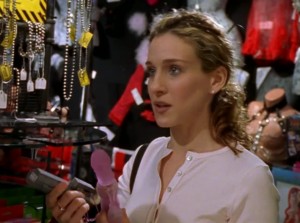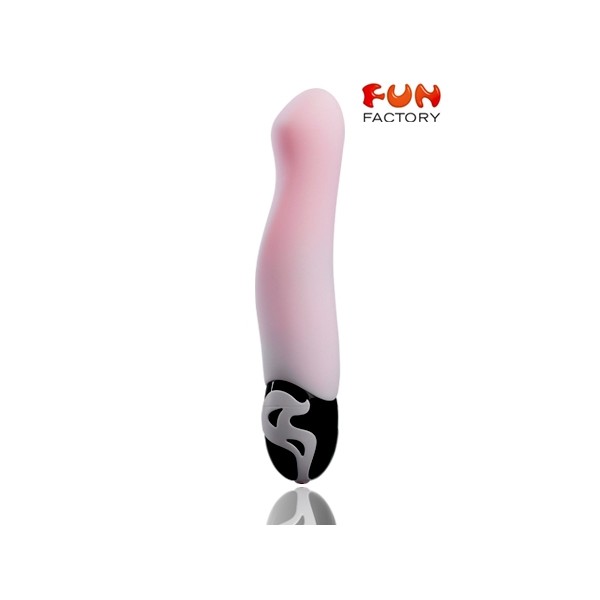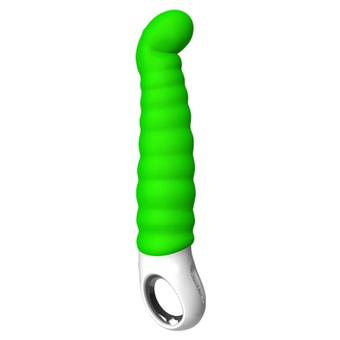
Table des matières
The origins of the vibrator: How the vibrator was he born?
In 19th century Britain, for women with chronic anxiety, the doctor prescribed pelvic massage with the fingers. Doctors finding this task tedious and time-consuming came up with the idea of inventing a device that would do the job for them.

Given the enthusiasm of the media inspired by the appearance of a vibro in an episode of Sex And The City in the late 1990s, you’d think the vibrator had just been invented. Any mistake is about to be corrected by a new movie, Hysteria, which tells the true story of the creation of the vibrator.

The vibrator was, in fact, invented by respectable doctors who, tired of creating orgasms in their patients with their fingers only, devised a device that could do the job for them. Their invention became very popular among the ladies of the time, who soon began to purchase vibrators for their personal use.
“I’ve done a lot of sex movies,” admits Maggie Gyllenhaal, “but this one pushes my limits even further. Gyllenhaal plays a fiery young woman in love with the doctor who invented the vibrator. She admits, “I just think there is something inherently awkward about a vibrator. Owning one is not something most people admit to. Nobody talks about it, it’s still kind of a secret. It is therefore very difficult « , she added, bursting into laughter, » to imagine that 100 years ago women did not have the right to vote, but that they went to the doctor to masturbate. »
In the 19th century, the vibro was therefore created to treat hysteria. Symptoms of hysteria included chronic anxiety, irritability, and abdominal heaviness. But in fact, these women suffered from simple sexual frustration – by the middle of the 19th century the problem reached epidemic proportions, up to 75% of the female population was affected. Because the very idea of female sexual arousal was forbidden in the Victorian era.
The only effective remedy was a treatment which had been practiced by doctors for centuries, « consisting of pelvic massage – » carried out manually, until the patient had reached a « hysterical climax », after which she appeared miraculously. restored. This being in the Victorian era, the solution was obvious: to develop a device that would get the job done faster.
The first vibrator therefore saw the light of day in the early 1880s thanks to a doctor from London, Dr J Mortimer Granville.
Initially, powered by a generator the size of a refrigerator, the device was installed only in doctor’s offices and operated by doctors. But home electrification soon brought smaller, hairdryer-like versions, and by the turn of the century, more than 50 varieties were on sale.
For the next 20 years or so, the vibrator as it was called – enjoyed a very respectable popularity, advertised alongside other harmless home appliances in the distinguished pages of magazines such as Home Companion, describing them as « those lovely companions. » « , And promising, » All the pleasure of youth … will vibrate in you « . In 1909, Good Housekeeping published a test of the various designs, while an advertisement in a 1906 issue states: « It can be applied more quickly, evenly and deeply than by hand and for as long as you can. desire. »
Yet hardly anyone has ever referred to a « hysterical climax » as an orgasm – for how could it be? It was taken for granted in Victorian England that without penetration nothing sexual could take place. Eventually, the appearance of a vibrator in a porn movie caused the vibrator to be rejected from « right minded » society.
It reappeared in the 1960s as a pretty daring sex toy, but according to the famous Shere Hite survey of sexual behavior in the 1970s, only 1% of women have ever used a vibrator. Perhaps this was not surprising, given that most vibrators of the time were modeled after a very masculine notion of what a woman was looking for – an oversized phallus – replicating, in other words, the even male anatomy whose shortcomings precipitated the invention of the vibro …
But over the past 15 years, thehistory of the sextoy has experienced a kind of rebirth. He started with the invention of the rabbit sex toy in the mid-1990s – a model that features a clitoral stimulator, and was popularized by its appearance in Sex And The City. The advent of internet shopping has also contributed to the comeback of the vibro. Inspired by its success, other manufacturers have designed models that pay more attention to the female anatomy. Not so surprisingly, a 2009 US poll found that only 50% of women had used a vibrator.
Much of what we now know about the history of the vibrator comes from a little school book written by an American historian, wonderfully titled Orgasm Technology. Published in 1999, it is striking, and rather to say, that despite being an interesting story, no account of the history of the vibrator had existed until then, whether in academia or popular culture. Historian Rachel Maines’ book helped inspire both a Broadway drama, The Play Vibrator, which won three Tony nominations, and a film, Hysteria.
The three producers of Hysteria, one of the two authors and the director are women, and this is no accident. “I think it makes it more acceptable to have women telling the story,” suggests one of the producers, Judy Caire. “If you had a guy telling the vibro story, he might feel exploited. While women find it funny.
If the story of the vibrator tells us nothing, it’s because men have been determined for millennia to deny the most obvious truth about women’s sexual needs. The explanations for this collective denial range from deep fear of female sexuality to outright laziness. Either way, Maines says: “The constant from Hippocrates to Freud – despite the breathtaking changes in almost every other area of medical thought – is that women who do not achieve orgasm through penetration only are sick or defective. Western society has consistently preferred to « pathologize » about 75% of the female population as frigid, hysterical, or, as the Victorians liked to say, « in a bad mood, » than acknowledging the inconvenient truth.
To say that the vibrator comes from the laziness of men!


